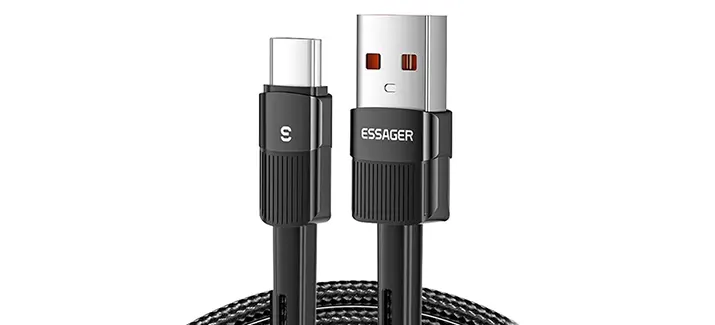
A Comprehensive Guide to Mobile Charging Cable Types
Mobile devices have become an integral part of our daily lives, and keeping them charged is essential. However, with multiple cable types available, it can be confusing to choose the right one. In this comprehensive guide, we'll unravel the mysteries of mobile charging cables, discussing their types, compatibility, and much more.
What are the Different Types of Mobile Charging Cables
USB-A to Micro-USB Cable

Description: This cable is a classic and has been used for years with Android smartphones, tablets, and various other gadgets. It typically features a USB-A connector on one end and a Micro-USB connector on the other.
Compatibility: Android devices, power banks, and many accessories.
Common Use: Charging and data transfer.
USB-A to USB-C Cable:

Description: USB-A to USB-C cables are versatile and can be used to charge a wide range of devices, including modern Android smartphones, tablets, and laptops. They feature a USB-A connector on one end and a USB-C connector on the other.
Compatibility: Devices with USB-C ports, such as Android smartphones, newer laptops, and some accessories.
Common Use: Charging, data transfer, and connecting devices like laptops to smartphones.
Lightning Cable (Apple)

Description: Lightning cables are designed for Apple devices and are compatible with iPhones, iPads, and iPods. They feature a Lightning connector on one end and a USB-A or USB-C connector on the other, depending on the model.
Compatibility: Apple devices, power banks, and select accessories.
Common Use: Charging, data transfer, and connecting Apple devices to computers or chargers.
Magnetic Charging Cables (MagSafe)

Description: MagSafe charging cables are magnetic and securely attached to compatible Apple devices.
Compatibility: Recent Apple devices featuring MagSafe technology.
Common Use: Wireless charging and secure attachment.
USB-A to Apple 30-pin

Description: Used with older Apple devices like the iPhone 4 and earlier, this cable has a USB-A connector on one end and a 30-pin connector on the other.
Compatibility: Legacy Apple devices.
Common Use: Charging and data transfer for older devices.
USB-C to USB-C Cable:

Description: USB-C to USB-C cables are commonly used for fast charging and data transfer between devices with USB-C ports, including modern Android smartphones and laptops. They feature USB-C connectors on both ends.
Compatibility: Devices with USB-C ports, such as Android smartphones, newer laptops, and some accessories.
Common Use: Fast charging, data transfer, and connecting USB-C devices to each other.
FAQs About Moblie Charging Cables
How do I know which cable my device uses?
Check your device's port and refer to its specifications in the user manual or online resources.
Can I use any USB cable for charging?
While many cables are interchangeable, it's essential to match the cable type and power requirements to your device for safe and efficient charging.
Are all USB-C cables the same?
No, USB-C cables can vary in terms of charging speed and data transfer capabilities. Always check the cable's specifications.
Are wireless chargers slower than wired ones?
Wireless charging can be slightly slower, but modern wireless chargers offer fast charging capabilities.
Do I need a special cable for fast charging?
A5: Yes, fast charging often requires specific cables that can handle higher power delivery. Check your device's requirements.
Conclusion
Choosing the right mobile charging cable is crucial for efficient and safe charging. Understanding the different cable types and their compatibility ensures that you can keep your devices powered up and ready to use. Whether it's the classic USB-A to Micro-USB or the versatile USB-C to USB-C, there's a cable for every device and charging need.
Latest Blogs

Exploring Memory Card Types: A Comprehensive Guide

Blackview Tablet Reviews: A Comprehensive Look at Features and Performance

The Best Portable Power Stations & Solar Generators in the UK (2025 Guide)

10 Best Smartwatches for Kids


